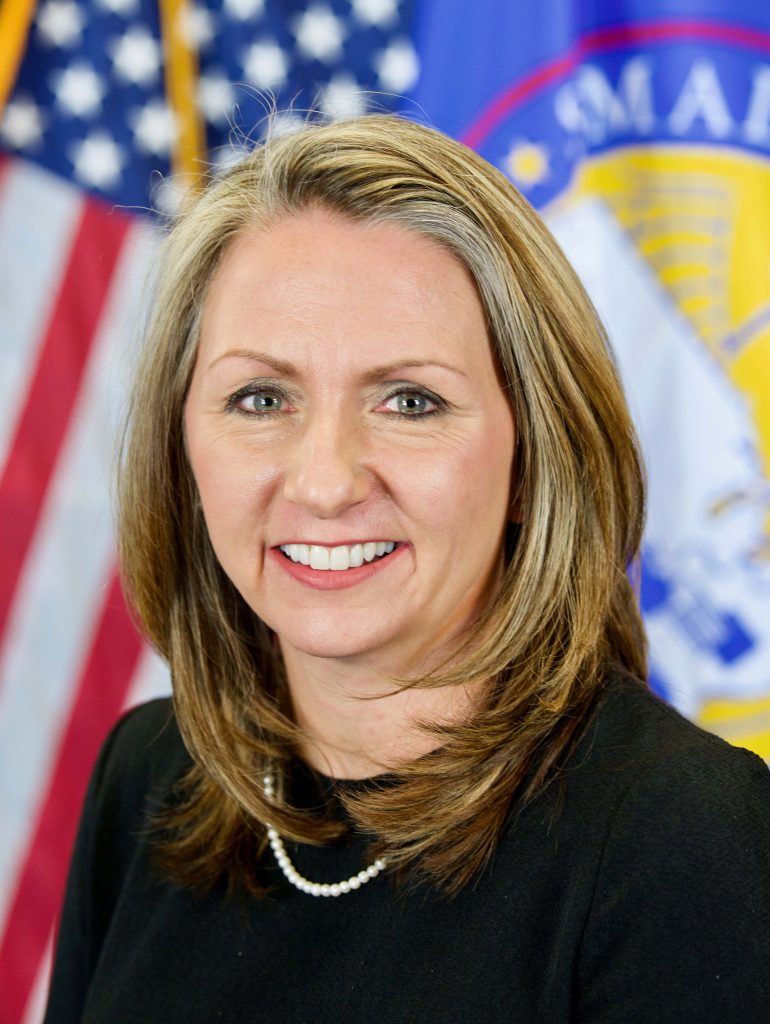Calling in The Experts to Clear Up Confusion
HURON, S.D. – CFAP – EIDL – PPP…Sure, there’s some relief available to agriculture producers, but figuring out which program or programs will work best for your operation can be confusing. To help farmers and ranchers understand what program(s) are right for them and their operation and to get their questions answered, May 27, South Dakota Farmers Union (SDFU) hosted a remote seminar with Farm Service Agency and Small Business Administration.
More than 90 farmers and ranchers attended the lunch-hour meeting.

“The situation is dire – and relief information is fluid,” says Karla Hofhenke, SDFU Executive Director. “Because things are constantly changing, we wanted to provide family farmers and ranchers with the most current information to help them receive relief as quickly as possible.”
When it comes to the Coronavirus Food Assistance Program or CFAP, Jamie White, Acting State Executive Director for South Dakota Farm Service Agency (FSA), says the process is as streamlined and timely as she’s seen during her 20 years with FSA.
“This is one of the most timely, implemented disaster programs that FSA has administered. Once producers qualify, the payments are immediate,” White shares.
During the May 27 call, White explained how CFAP worked and answered producer questions including a few listed below:

What is CFAP? CFAP funds will provide up to $16 billion in direct payments to provide relief to America’s farmers and ranchers impacted by the coronavirus pandemic. There is a payment limitation of $250,000 per person, or up to $750,000 for limited liability corporations, limited partnerships and corporations for all commodities combined.
Who qualifies? Producers with ownership risk of identified commodities that suffered a 5 percent or greater national price loss as a result of the COVID-19 pandemic or had substantial marketing costs of inventories and produce or own one of the following commodities: milk, non-specialty crops, wool, livestock and/or specialty crops.
How do crop payments work? Producers will be paid based on inventory subject to price risk held on Jan. 15, 2020. A single payment based on 50 percent of a producer’s 2019 total production or the 2019 inventory as of Jan. 15, 2020, whichever is smaller, multiplied by 50 percent and then multiplied by the commodity’s applicable payment rates.
What do the terms unpriced or subject to price risk mean? Unpriced or subject to price risk, means that commodity’s price is not yet secured through a forward contract, agreement or similar binding transaction as of Jan. 15, 2020.
To qualify, producers must provide the following information for CFAP:
• Total 2019 production for the commodity that suffered a 5 percent or greater price decline, and
• Total 2019 production that was not sold as of Jan. 15, 2020.
Unique eligibility requirement of CFAP:
Unlike other FSA programs, special payment limitation rules apply to participants that are corporations, limited liability companies and limited partnerships (corporate entities). Producers need to demonstrate they are engaged in the operation, working a minimum of 400 hours.
What if I have not marketed my livestock yet? CFAP accounts for sold livestock as well as livestock not yet ready to be marketed. For livestock a single payment will be calculated using the sum of the producer’s number of livestock sold between Jan. 15 and April 15, 2020, multiplied by the payment rate per head, and the highest inventory number of livestock between April 16 and May 14, 2020, multiplied by the payment rate per head.
Producers must provide the following information for CFAP: total sales of eligible livestock, by species and class, between Jan. 15, 2020 to April 15, 2020, of owned inventory as of Jan. 15, 2020, including any offspring from that inventory; and highest inventory of eligible livestock, by species and class, between April 16, 2020, and May 14, 2020.
How do I apply? For application, helpful calculator and more details visit www.farmers.gov/cfap or contact your local FSA office.
Representatives from the U.S. Small Business Administration (SBA) also shared information during the remote seminar. They explained in broad terms how the Payroll Protection Program (PPP) and Economic Injury Disaster Loan (EIDL) and EIDL Advance could potentially work for agriculture producers.
A portion of each loan may be forgivable or considered as a grant. While SBA oversees both loan programs, the PPP is administered through local SBA-approved lenders, while the EIDL loan application is facilitated directly through the SBA, on behalf of the U.S. Department of the Treasury.
How does PPP work? Whether you have employees or are your own labor force, PPP provides qualified applicants with eight weeks-worth of income based on a calculation that uses 2019 income and payroll.
Federal guidelines for PPP were modified on June 5 allowing small business the opportunity to use the PPP funds over a 24-week period, instead of the initially prescribed 8 weeks. At least 60 percent of the PPP loan must be used for payroll expenses, while up to 40 percent may be used for business operational expenses including mortgage interest, lease and utilities. All PPP funds have the potential of becoming forgivable if the funds are utilized within the federal guidelines of the PPP and forgiveness application is approved. Both the PPP application and forgiveness requests are facilitated by SBA-approved lenders across South Dakota. Any funds not forgiven will need to be paid back at a 1 percent interest rate. Because many schedule F’s do not show income, PPP may not be a suitable option for some farmers. For more information on PPP, visit www.sba.gov/paycheckprotection.
How do I apply for PPP? For application, please see your local SBA lender.
What about EIDL? Farmers and ranchers can simultaneously apply for PPP as well as EIDL. Even if PPP is not a fit, representatives recommend that EIDL may work for agriculture producers because the application is different.
With EIDL, how much can a business borrow?
SBA determines loan amount based on working capital needs.
Interest rates:
• 3.75 percent for small businesses
• 2.75 percent for nonprofit organizations
• Terms up to 30 years
• Payments deferred for 1-year
• Currently, EIDL loans are approved up to $150,000
How can EIDL loan funds be used?
The funds can be used as working capital loans; to pay fixed debts, payroll, accounts payable and other bills that could have been paid had the disaster not occurred.
The funds are not intended to replace lost sales/profits or for expansion.
How do EIDL Advances work?
Be sure to check the box toward end of online EIDL application for consideration for EIDL Advance up to $10,000 and provide bank account information where funds will be deposited.
• Advance amount determined by number of employees
• $1,000 per employee up to a maximum of $10,000
• Advance does not have to be paid back; borrower does not have to qualify for loan to receive Advance
• Advance is subtracted from PPP forgiveness
How can I apply for EIDL and EIDL Advance?
Apply online at www.SBA.gov/Disaster. There is no cost to apply, no prepayment penalty and no obligation to take the loan if offered. Borrowers with current SBA loans, including existing SBA Disaster Loans, are eligible for Economic Injury Disaster Loans if they meet the criteria but they cannot be consolidated.
To learn more, contact the Small Business Administration S.D. District Office at 605-330- 4243.
Relief funds are helpful, but more needs to be done
National Farmers Union President Rob Larew also participated in the online seminar. Larew shared with producers that the organization understands that the relief funds are not enough. Policy change needs to happen to help family farmers and ranchers moving forward.
“This crisis in many ways has highlighted many fundamental problems Farmers Union has been arguing need to be repaired for many years,” Larew says. “Consumers are starting to see they cannot take the food system for granted, and we need to change the ways we do things. We are beginning to see conversations out there about COOL, local and regional processing and enforcement of anti-trust laws and other crucial things….For all the challenges we see today, in addition to helping producers connect to resources, we are working to get more help out to them. We also continue to work for fundamental changes to the food system.”
To learn more about how South Dakota Farmers Union supports South Dakota’s family farmers and ranchers, visit www.sdfu.org.

